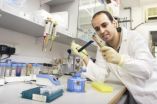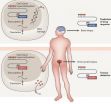(Press-News.org) A number of environmental toxins pose considerable health threats to humans, and the heavy metal cadmium (Cd) ranks high on the list. Most of us are exposed to it through plant-derived foods such as grains and vegetables. Now, new research offers ways in which investigators can reduce the amount of Cd found in the food we eat, according to a review published online September 12th in the Cell Press journal Trends in Plant Science.
"Cadmium is virtually everywhere in the environment, and it is taken up into the human body and bioaccumulates for decades in the kidney," says first author Dr. Stephan Clemens, of the department of plant physiology at the University of Bayreuth, in Germany. Cd exposure may lead to kidney dysfunction, osteoporosis, cancer, cardiovascular disease, and other serious health conditions. Because there is no safe level of cadmium exposure, there is an urgent need for lowering its intake.
Most Cd enters the body through plant-derived foods because plants can efficiently take up Cd from the soil. "We need to further develop molecular understanding of the mechanisms that lead to plant Cd uptake for the reduction of Cd levels in food. Fortunately, our knowledge is growing," says Dr. Clemens.
In their recent review, Dr. Clemens and his colleagues examined studies investigating how Cd accumulates in certain plants, and they used the information to determine how we might develop low Cd accumulating crops. "Through excellent basic rice molecular biology and genetics research, we have in the past couple of years learned a lot about why one rice plant accumulates more Cd in the grain than another rice plant even when they are grown on the same field," he explains. "This knowledge can now be used for targeted and efficient breeding to develop cultivars that retain their favorable characteristics but transport less Cd to the grain." He adds that we should also make an effort to better understand Cd accumulation in other crop plants such as wheat and potato. The authors note that, to their knowledge, breeding for low Cd accumulation is not common practice, but it should be possible because there is such variation in Cd uptake by different varieties of rice, wheat, and other plants, and because research has identified genes that can be used as markers to select specific varieties to breed.
It would of course be best to get rid of Cd in the environment, "but it will take a long time to achieve this; in the meantime we need other solutions," says Dr. Clemens.
###Clemens et. al.: "Plant science: the key to preventing slow cadmium poisoning."
Studies shed light on how to reduce the amount of toxins in plant-derived foods
2012-09-12
ELSE PRESS RELEASES FROM THIS DATE:
Gut bacteria increase fat absorption
2012-09-12
Baltimore, MD —You may think you have dinner all to yourself, but you're actually sharing it with a vast community of microbes waiting within your digestive tract. A new study from a team including Carnegie's Steve Farber and Juliana Carten reveals that some gut microbes increase the absorption of dietary fats, allowing the host organism to extract more calories from the same amount of food.
Previous studies showed gut microbes aid in the breakdown of complex carbohydrates, but their role in dietary fat metabolism remained a mystery, until now. The research is published ...
Sandia, OurEnergyPolicy.org release 'Goals of Energy Policy' poll results
2012-09-12
LIVERMORE, Calif.— U.S. energy policy should simultaneously pursue security of its energy supply, economic stability and reduced environmental impacts, says a national poll of energy professionals jointly prepared by Sandia National Laboratories and OurEnergyPolicy.org.
The findings of the national poll, "The Goals of Energy Policy," show that the vast majority — more than 85 percent — of the 884 energy professionals surveyed prefer policymaking that pursues all three goals at once.
The poll asked the experts to allocate 100 points, representing a 100 percent policymaking ...
New paper addresses causes of shattering glass cookware; Margin of safety described as 'borderline'
2012-09-12
A new paper appearing in the September 2012 edition of the Bulletin of The American Ceramic Society for the first time provides a scientific explanation of why some glass cookware sold in the United States is more susceptible than others to "explosive" shattering and the possibility of exposing consumers to injury from flying glass shards.
Clear glass baking dishes and pots are a staple in many households around the world and have been since they were first introduced in 1915 to consumers by the Corning Glass Works, which created the Pyrex brand name. The original Pyrex ...
Old deeds, witness trees offer glimpse of pre-settlement forest in West Virginia
2012-09-12
PARSONS, W. Va., September 12, 2012 – Using old deeds and witness trees, a U.S. Forest Service scientist has created a glimpse of the composition of the forests that covered today's Monongahela National Forest before settlement and logging changed the landscape.
"European Settlement-Era Vegetation of the Monongahela National Forest, West Virginia" describes how a Forest Service scientist and her West Virginia University colleague answered questions about the composition of early forests using a unique dataset. The dataset was built with original deeds, metes and bounds ...
Predicting a die throw
2012-09-12
Vegas, Monte Carlo, and Atlantic City draw people from around the world who are willing to throw the dice and take their chances. Researchers from the Technical University of Lodz, Poland, have spotted something predictable in the seemingly random throw of the dice. By applying chaos theory and some high school level mechanics, they determined that by knowing the initial conditions – such as the viscosity of the air, the acceleration of gravity, and the friction of the table – it should be possible to predict the outcome when rolling the dice.
The researchers created ...
A carefully scheduled high-fat diet resets metabolism and prevents obesity
2012-09-12
New research from the Hebrew University of Jerusalem shows that a carefully scheduled high-fat diet can lead to a reduction in body weight and a unique metabolism in which ingested fats are not stored, but rather used for energy at times when no food is available.
The research was conducted by Prof. Oren Froy along with Prof. Zecharia Madar, research student Yoni Genzer and research fellow Dr. Hadas Sherman at the Institute of Biochemistry, Food Science and Nutrition, at the Hebrew University's Robert H. Smith Faculty of Agriculture, Food and Environment. The results ...
Epigenetics emerges powerfully as a clinical tool
2012-09-12
The research team led by Manel Esteller, director of the Cancer Epigenetics and Biology Program at the Bellvitge Biomedical Research Institute (IDIBELL), professor of genetics at the University of Barcelona and ICREA researcher, has updated the latest findings in applied epigenetics in a review paper published in Nature Reviews Genetics.
There is a growing need for better biomarkers that allow early detection of human diseases, especially cancer. The markers can improve primary prevention, diagnosis and prognosis of disease. Furthermore, it is possible to predict which ...
First pediatric study to look at the role of vitamin D in critical illness
2012-09-12
OTTAWA, Canada, September 12, 2012—Vitamin D is increasingly being recognized as important for good health. Vitamin D is a hormone made in the skin following sun exposure or acquired from diet and supplement intake. Previous medical research has shown that low body levels of vitamin D make people more susceptible to problems such as bone fractures, poor mental health and infections like the common cold. Until recently, there had been little consideration given to the role of vitamin D in more severe diseases, which is why Dr. Dayre McNally's recent publication in the esteemed ...
Study implicates marijuana use in pregnancy problems
2012-09-12
CINCINNATI – New research indicates marijuana-like compounds called endocannabinoids alter genes and biological signals critical to the formation of a normal placenta during pregnancy and may contribute to pregnancy complications like preeclampsia.
A study in the Sept. 14 edition of The Journal of Biological Chemistry offers new evidence that abnormal biological signaling by endocannabinoid lipid molecules produced by the body disrupts the movement of early embryonic cells important to a healthy pregnancy, in particular trophoblast cells that form the placenta. Abnormal ...
King Richard III search in new phase after 'discovery has potential to rewrite history'
2012-09-12
Historic findings of human remains- including a man with apparent battle wounds and curvature of the spine - have been revealed by an archaeological team from the University of Leicester.
The University of Leicester has been leading the archaeological search for the burial place of King Richard III with Leicester City Council, in association with the Richard III Society. The dig, now in its third week, has yielded dramatic findings of human remains which the University will now subject to rigorous laboratory tests.
The stunning findings of human remains excavated by ...



